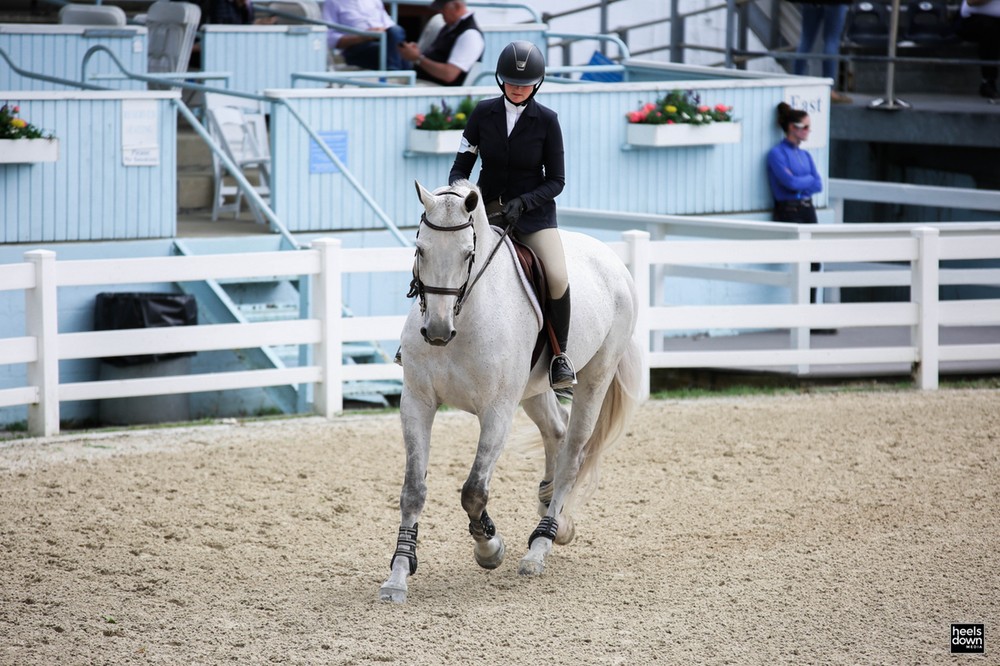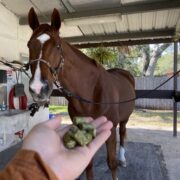Why Corners Are the Most Important Part Of Your Course

Corners are the most important part of your hunter or equitation trip. It’s not the distances, it’s not the straight lines. Corners are the most important part of your course because they give you an opportunity to create a good pace, an even rhythm, and make the adjustments necessary to have straight lines and perfect distances. If you use your corners well, other parts of your course will fall into place.
“A judge will be looking at your corners.”
Cutting corners is a particularly common habit. Most of us do it, for one reason or another. If you’re looking to shave time off your course, you might cut your corners. People cut corners for other reasons too, often times related to bad habits or inexperience.
What people don’t realize is that if you use your corners well in your courses, you can set yourself up for great pace, an even rhythm, and you can make any adjustments you might need to make prior to meeting your next fence. A horse ridden correctly through the corners of a ring will have better balance, better distances, and a better pace around the whole course.
“Think of it as a “check-in”. Ask yourself if your pace is even, whether you need any adjustments, or if your turns are smooth.”
A horse that goes through them too quickly will often cut a corner or leave the corner too late, which makes it easy to make a mistake at an upcoming fence. If you turn too quickly, you’ll over shoot and miss the middle of the jump because you would have to adjust your horse. When adjustments aren’t made ahead of time, they throw off your horse’s rhythm and create the opportunity to chip a fence or leave from a long spot. Either situation disrupts the rhythm of your ride.
If you leave the corner too late, similar problems can arise. Readjusting constantly to get to the center of a fence with a good pace and even stride will likely throw off your distance. You can use corners to help you find the center of your next fence, and set yourself up for a straight, even line.
Focusing on balancing in your corners helps create a smooth, polished round. A judge will be looking at your corners. It’s a great place to show them your efforts. If your horse races through the corner, they’ll notice. Show off your horse here by emphasizing your connection, and your confident piloting skills.
Use the corners of a ring to take control of your ride. They’re the perfect location to make a change like decreasing your pace, or increasing it. As you turn, you have the opportunity to find contact with the horse’s mouth, allowing you to take control of your ride if your pace is getting away from you.
Think of it as a “check-in”. Ask yourself if your pace is even, whether you need any adjustments, or if your turns are smooth. If the answer is you do need to make adjustments, you learned this early enough to make them without interfering with your upcoming jumps. Once you’ve found your happy medium, soften and release between the corners the line to the first jump. Take the pace you’ve found to the base.
While considering corners may be uninspiring, they’re under-used and under-appreciated. Use the most important part of your course to add polish to your round, take control of your pace, and show the judges how soft and supple your horse can be. Learning to use corners well pays off in the show ring.
Here are some ways to improve your use of corners:
– Use circles less than 20 meters
– Performing a balanced trot in these exercises will help you develop a feel for a balanced course.
– Be careful to never go too far into your corner that you must make a direct, sudden move to get out of it.
– Ride a 20 meter square, being careful of what exact shape you’re making so you can begin to understand and feel how a TURN and CIRCLE should feel.
– Ride 4 straight lines and 4 corners.


